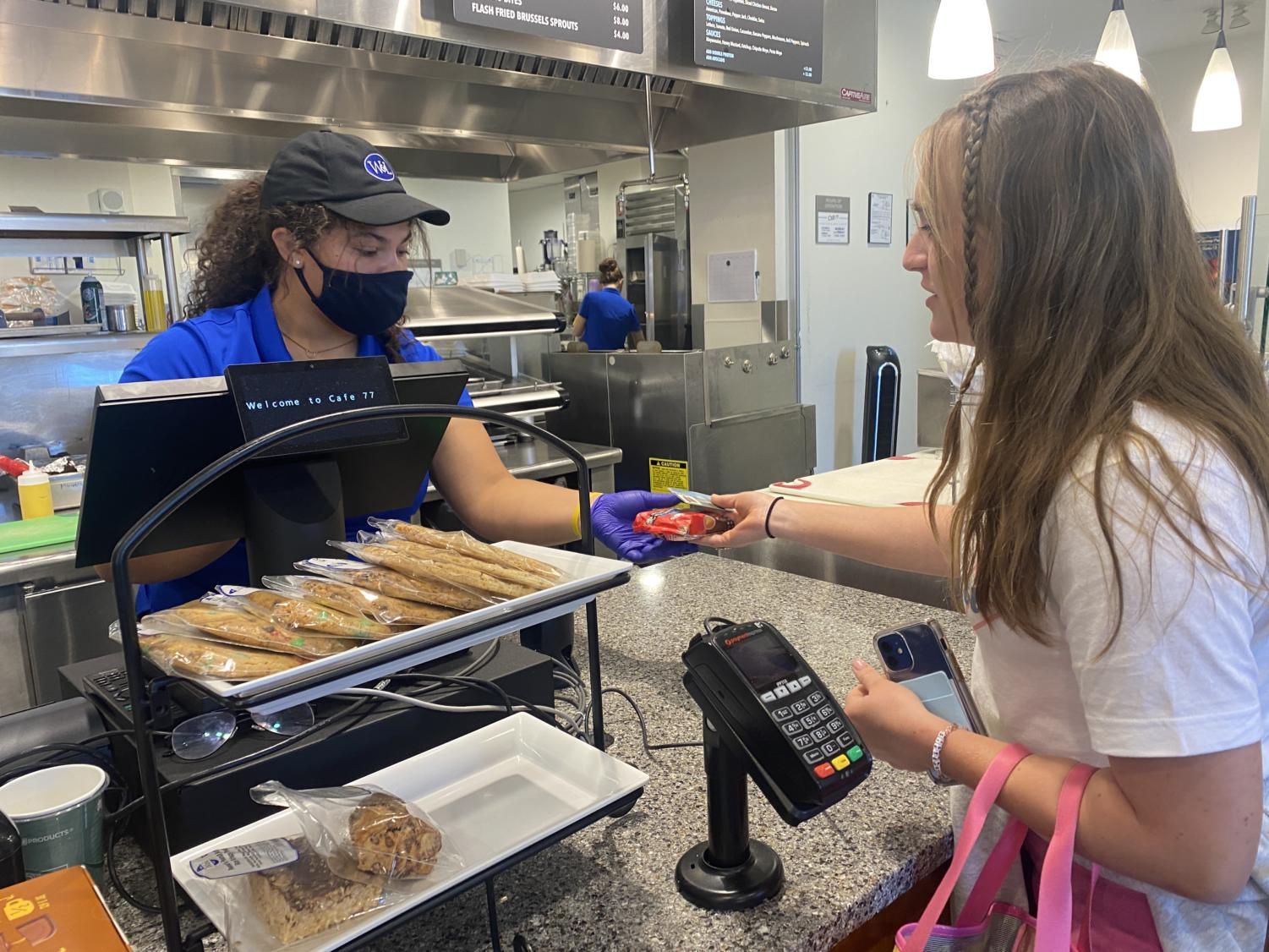Food prices, swipe values increase at campus dining venues
September 27, 2022
Menu prices and swipe values have increased at Washington and Lee’s on-campus retail dining venues for the first time in three years.
Swipes, also known as meal equivalencies, are now worth $9.50, up from their previous value of $8.75. Meanwhile, menu prices have risen an average of 5-10% compared to prices during the 2021-22 school year.
The changes have been a long time coming, said Ryan Miller, the university’s director for dining services. The department typically re-evaluates the price of each food item and beverage annually, but that process was halted by the university for the 2020-21 and 2021-22 academic years.
“I don’t think we had the resources to really look at pricing, even if we had a directive to do it,” Miller said. “Here we were trying to reinvent every venue and figure out how we were going to social distance and serve in the pandemic. It just didn’t feel right.”
In the same vein, swipe values remained static between 2020 and 2022, Miller said. Swipe values are intended to match the price of a full meal, hence why many items, such as bowls at Foodside, are worth exactly $9.50 now, he said.
This summer, dining services staff weighed ingredients by the ounce to find the overall food cost, or cost of producing a single menu item, in all of Washington and Lee’s retail dining locations—that includes Café 77, Fieldside, Foodside and E. Cafe. The department then adjusts prices so food costs account for about 30% of the total price, Miller said.
“I don’t think our price increases were that dramatic,” he said. “The vast majority of our pricing was pretty close to appropriate.”
Some categories, like smoothies, lattes and burgers, had to be upped more significantly based on their cost ratio, Miller said.
At retail options like E. Cafe in the Hillel House, which specializes in smoothies and sandwiches, some students feel that it’s harder to fit a full meal into a single swipe. Now that most smoothies cost $5.50, up from $4.50, and bagels with cream cheese are also more expensive, Oriana Gutierrez, ’24, said it’s harder to justify a meal at E Cafe.
“Last year, I could easily swipe for a bagel and a smoothie,” she said. “Now I sometimes need more than one meal swipe, which makes it kind of a logistical nightmare.”
Washington and Lee dining isn’t the only place where prices have increased. Other dining operations, particularly restaurants, have faced a slate of challenges during the pandemic that have forced price increases and menu changes.
Wholesale food prices were up 13.2% in August compared to a year prior, though the upward trend in prices halted between July and August, according to the Bureau of Labor Statistics. Meanwhile, menu prices have increased 8% on average over the last 12 months, according to National Restaurant Association findings.
Right now, turkey, chicken and deli meats are particularly expensive, though volatile prices mean prices change quickly, Miller said. Outside of food costs, the compostable disposable packaging the university uses is around 2.5 times as expensive as it was five years ago, he said.
But the university has more flexibility than restaurants, Miller said. That’s in part because The Marketplace’s evolving menu easily allows for substitutions—and because the university provides a fallback.
“We’re pretty lucky in that we are financially resourced to absorb [abrupt price increases,]” he said. “Dining services is a profitable entity within the university, but that’s not really our mission. My mission is really to provide for the student body.”
There’s a light at the end of the tunnel, Miller said: he expects costs to stabilize over the next few months. Most food orders are arriving on time, as well.
Campus dining has also avoided another challenge plaguing the food services industry: labor shortages. The department raised starting wages to $15.76 per hour in late 2020 and upped the wage floor to $16.25 this summer.
“The reality is that trying to make a living off of $12 an hour is pretty much impossible in Rockbridge County,” Miller said. “So when we moved to $15.76, that did wonderful things for us. We will have five or six people who are truly qualified for the position, and we actually have the luxury to pick and choose.”
Updated menu prices aren’t the only change for dining services this year. The department has converted its desktop-based point-of-sale system to a cloud-based system, operated by education tech firm Blackboard, that allows dining services staff to dispense with paper order forms.
Café 77 employee Alyssa Turner said she and her coworkers prefer the new POS system.
“There are a lot of different buttons, but it’s more modernized,” she said. “It gets complicated, but I think generally it’s easier. It’s a lot quicker.”
The new system also opens the door for mobile ordering, which is expected to start on campus in 1-2 years, Miller revealed.



